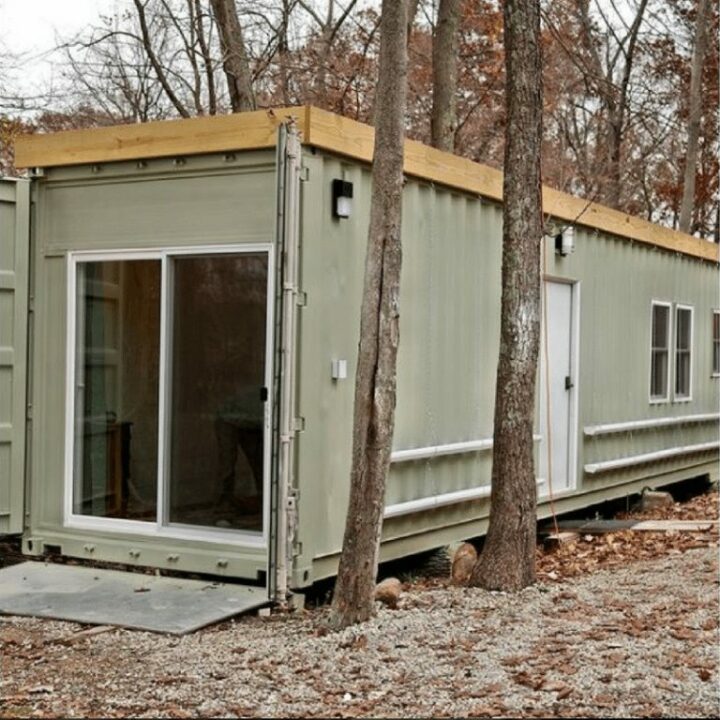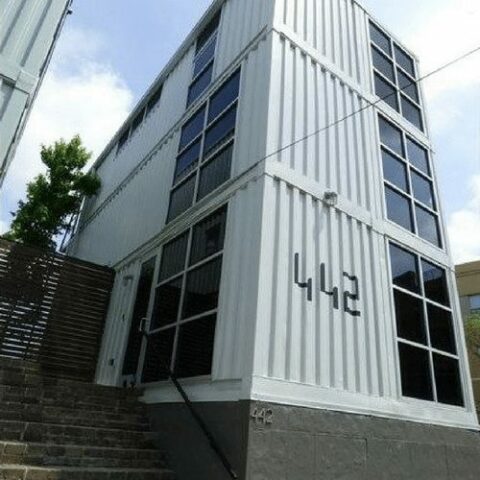
The shipping container home market is expected to grow to $51.35 billion by the end of this year, emerging as the future of alternative housing.
As container homes can cost as little as $50K to construct, are ideal for sustainable living, and offer endless design possibilities, they are now considered competitive with traditional homes.
Though often compared to tiny homes, shipping container homes come in all shapes and sizes, making them a popular choice for people who want a unique home. But how large are shipping container homes, really, and can they accommodate the needs of a full family?
Before deciding whether a shipping container home is the right choice, you should spend time getting a sense of their capacity and limitations.
In this article, let us answer the question “How big are shipping container homes?” as well as some factors to consider before planning the home of your dreams.
How Big Are Shipping Container Homes?

Shipping containers are popular building materials for alternative homes because they are sturdy, relatively cheap, and easy to work with.
Originally used for transporting goods, these containers usually measure 20 x 8 feet or 40 x 8 feet. Typically, 20-foot shipping containers offer 160 square feet of living space, while 40-foot containers offer 320 square feet for open floor plans. In comparison, these sizes are dwarfed by the 2,301 square feet usually found in traditional American homes.
Because of this, it is not uncommon for shipping container homes to be compared with tiny houses. A container home, however, has the advantage of a Jenga-inspired construction approach wherein shipping containers can be stacked and configured to increase available living space and be customized in various ways.
For example, the walls can be made from different materials such as wood, metal, or plastic, and the roof can be made from various materials, including asphalt shingles, metal sheets, or plastic panels. Large shipping container homes are also on the rise to meet the demand for accommodating a larger households and providing more living space.
Shipping Container Home vs Tiny Home Size Comparison
Shipping container homes and tiny homes are both popular choices for home ownership in the current market. They offer a variety of benefits that appeal to a range of homeowners, but there are some key differences between the two.
In order to create a long-lasting and safe residence, shipping container homes utilize the metal framework of a shipping container. A 16-foot container can offer a living space of 128 square feet, which is the smallest container home available. A 40-foot container offers 320 square feet of living space, which is the maximum size of a standard container.
Tiny homes, on the other hand, are typically defined as dwellings smaller than 500 square feet. They are often portable, and some can be towed by cars. Though the definition is vague, the trend of downsizing has taken hold across America, with people trading in their spacious McMansions for more manageable and sustainable homes.
While both home options offer small living options, shipping container homes are only limited by the size of the shipping container. They can be expanded to accommodate larger floor plans with the addition of multiple containers and by incorporating various building elements.
What Are the Types of Shipping Containers?

Shipping containers are widely used around the world. They come in all shapes and sizes and can be used for a variety of purposes.
That said, there are several types of shipping containers available, each with its own unique features, making them suitable for use as homes as well.
The most common type is the “Standard” shipping container which is typically available in either 8 x 20 feet or 8 x 40 feet. Depending on your preference, you can live in a little over 100 square feet of living space, but the dimensions can be increased by stacking the units.
There is also the “High Cube” shipping container, which is similar to a standard container but has an additional height of 12 inches. This can be an advantage for additional living space and providing extra height for your home. Remember that these typically cost about 50% more than the standard type.
Lastly, while the “Refrigerated” shipping container provides the same size as the standard container, you have the convenience of already having a well-insulated space. Known as reefer containers and used for the shipment of meat and produce, the containers are already insulated, which can save you money on insulation.
Since shipping containers are highly customizable depending on the items to be transported and shipping volume, you may also be able to find 48-foot and 53-foot containers. There are several types to choose from, and one may be just right for your home.
How Big Are Shipping Container Homes: Final Thoughts
Shipping container homes are a smart option for those who want to live in a smaller, more efficient space. However, they can also be customized to allow stacking and the addition of floor space for homeowners to get creative. See how you can maximize your living space with a container home by checking out our open floor plans.
Would you like to learn more about being a shipping container homeowner? Learn everything you need to know by reading our FAQ here.

